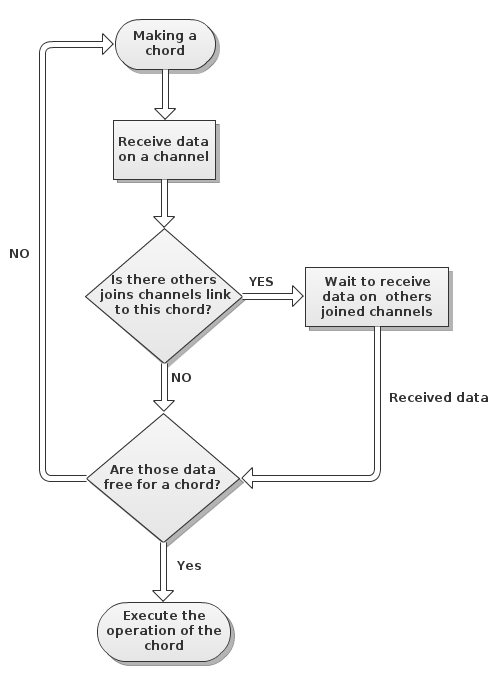This article may be too technical for most readers to understand.(January 2013) |
| Join-pattern | |
|---|---|
| Paradigm | concurrent computing, distributed programming |
| Developer | INRIA Inria |
| Website | Inria Join |
| Major implementations | |
| Join Java, Polyphonic C#, Unified Parallel C, Cω, Joins library, Boost. | |
| Influenced | |
| Join Calculus | |
Join-patterns provides a way to write concurrent, parallel and distributed computer programs by message passing. Compared to the use of threads and locks, this is a high level programming model using communication constructs model to abstract the complexity of concurrent environment and to allow scalability. Its focus is on the execution of a chord between messages atomically consumed from a group of channels.
Contents
- Description
- History
- π-calculus – 1992
- Join-Calculus – 1993
- Distributed Join-Calculus – 1996
- JoCaml, Funnel and Join Java – 2000
- Polyphonic C# – 2002
- Cω – 2003
- Scala Joins – 2007
- JErlang – 2009
- Join-pattern in classic programming literature
- Fundamental features and concepts
- Application domain
- Mobile agent
- Compilation
- Implementations and libraries
- Join Java
- JErlang
- C++
- C#
- JoCaml
- Hume
- Visual Basic
- Joins library (C# and VB)
- Scala
- Haskell
- Scheme
- Other similar design patterns
- See also
- References
- Notes
- External links
This template is based on join-calculus and uses pattern matching. Concretely, this is done by allowing the join definition of several functions and/or channels by matching concurrent call and messages patterns. It is a type of concurrency pattern because it makes easier and more flexible for these entities to communicate and deal with the multi-threaded programming paradigm.

